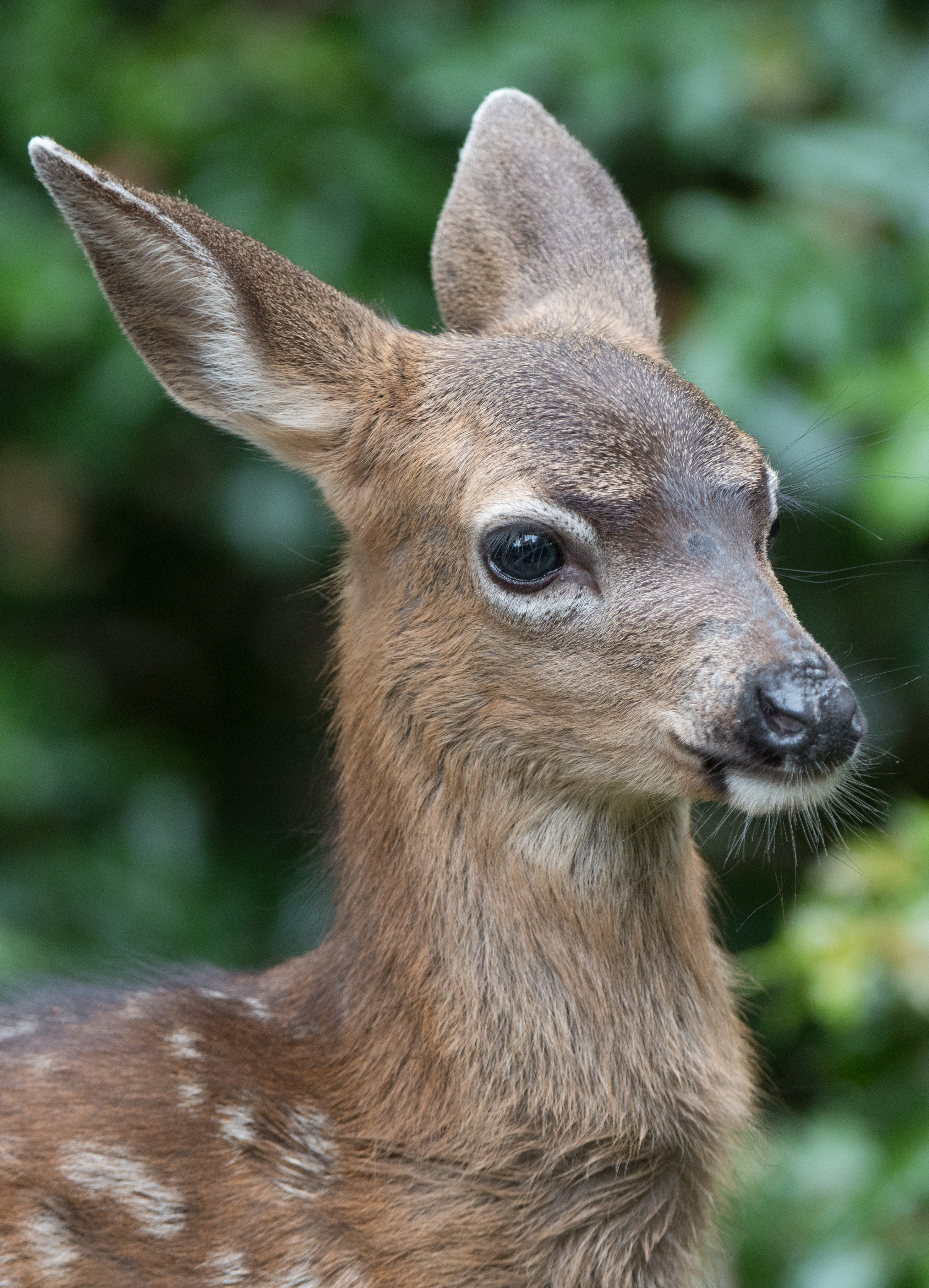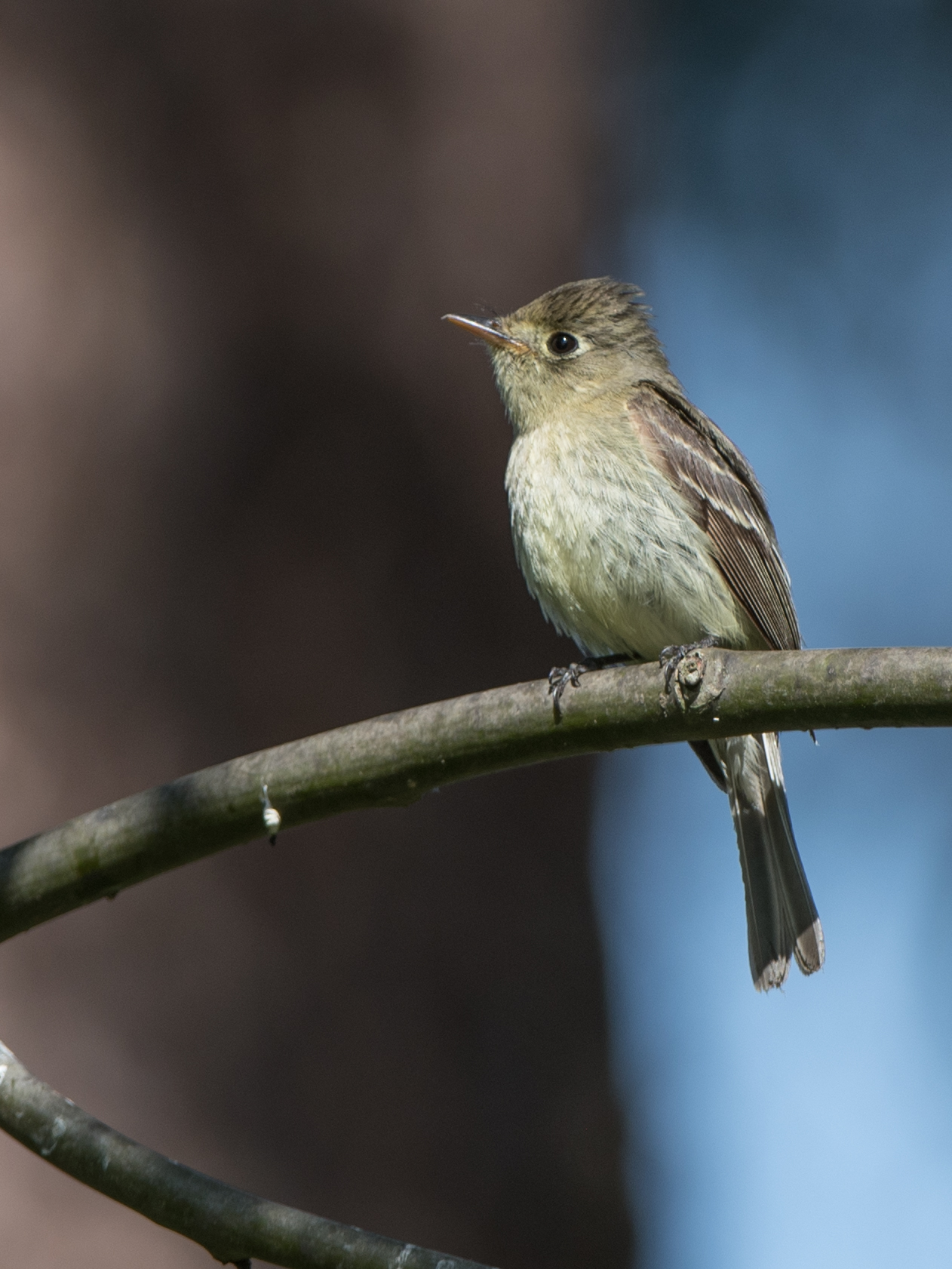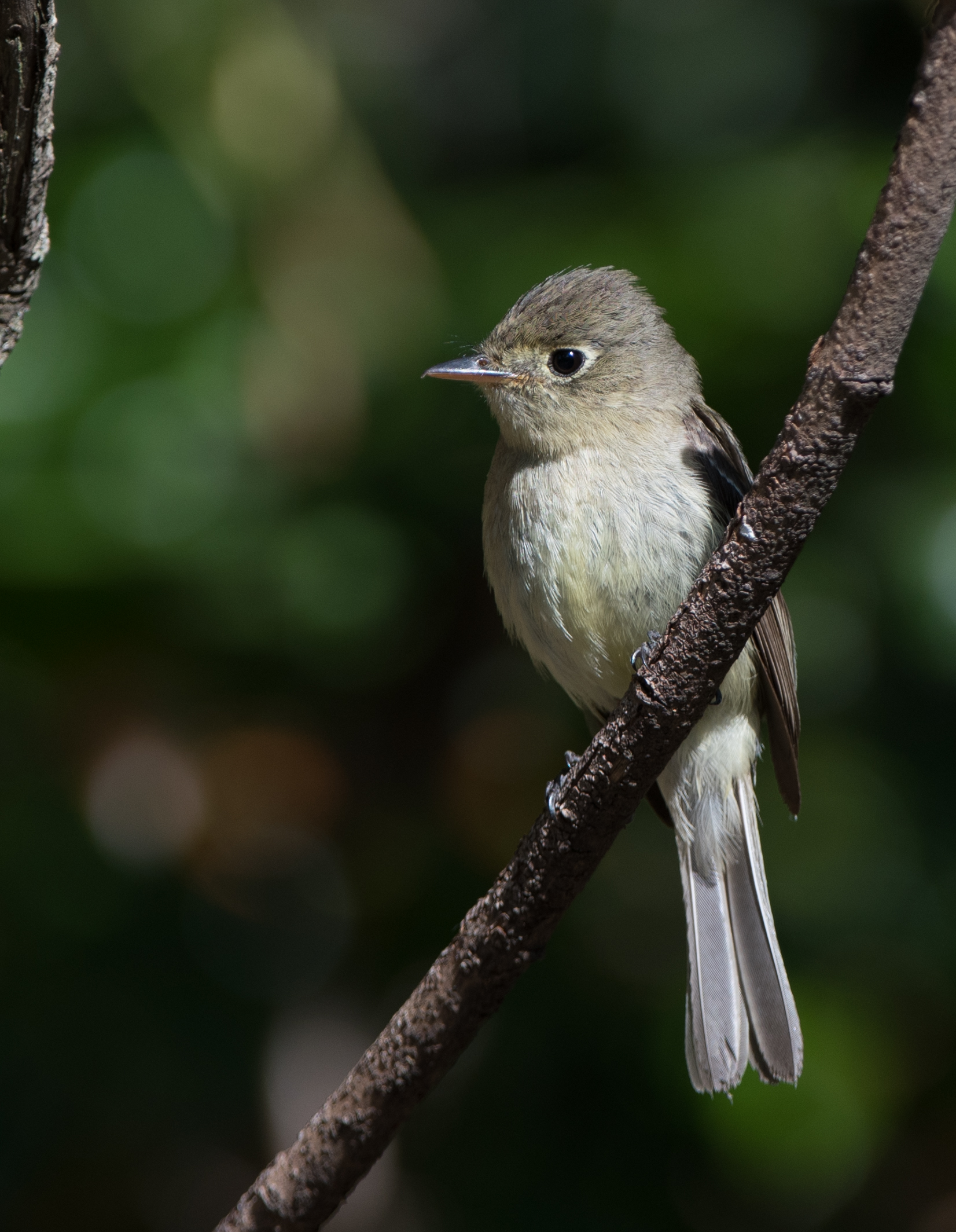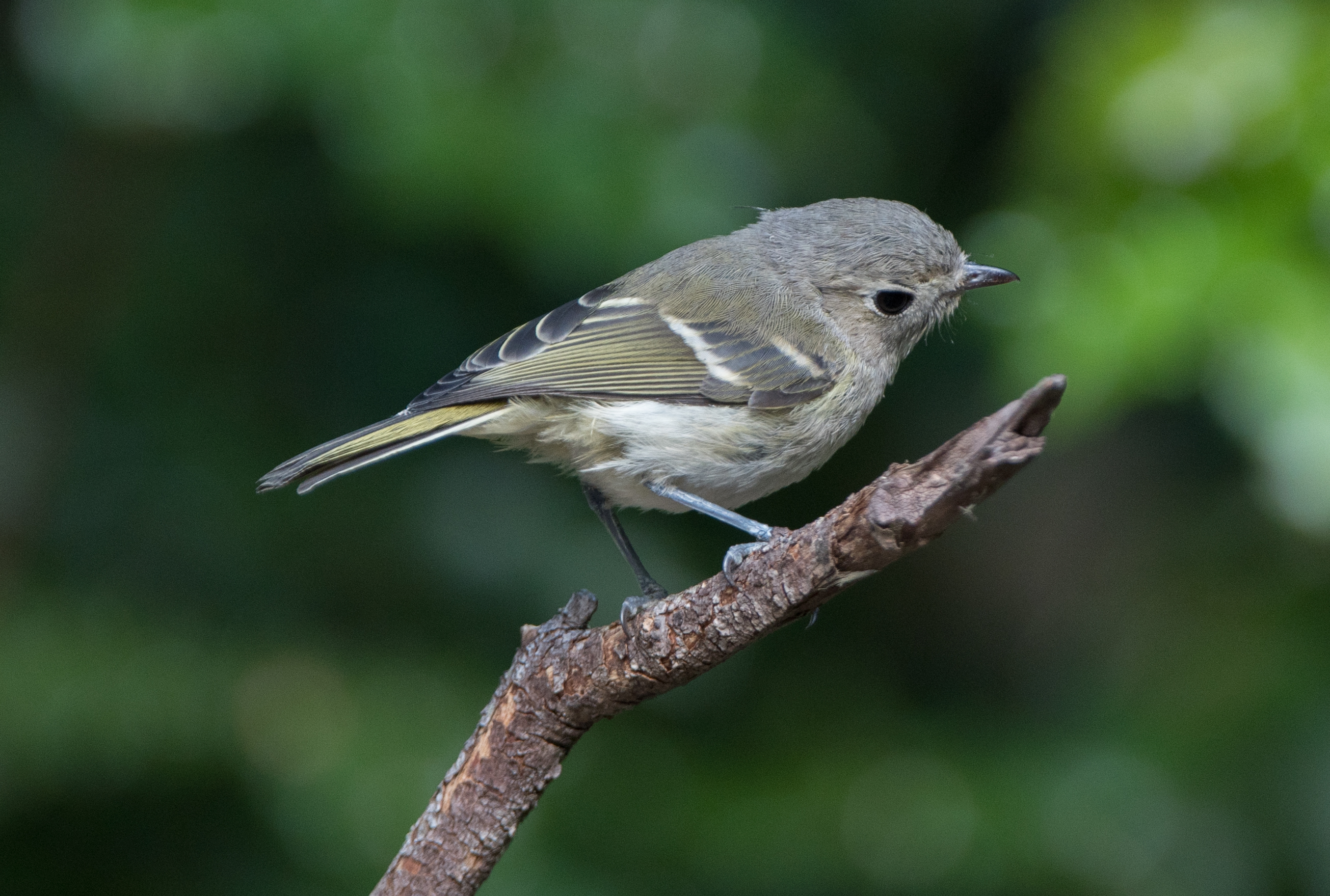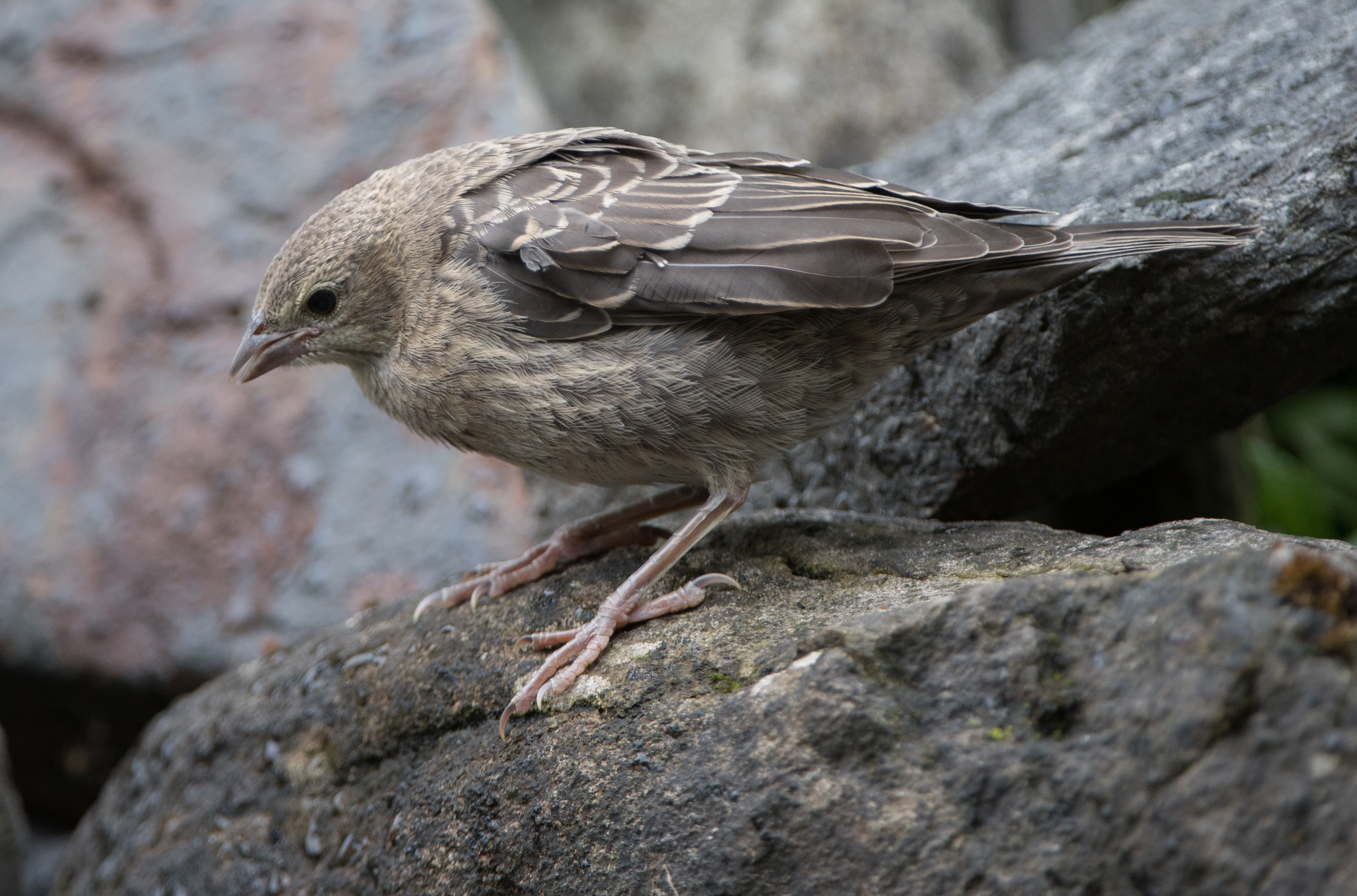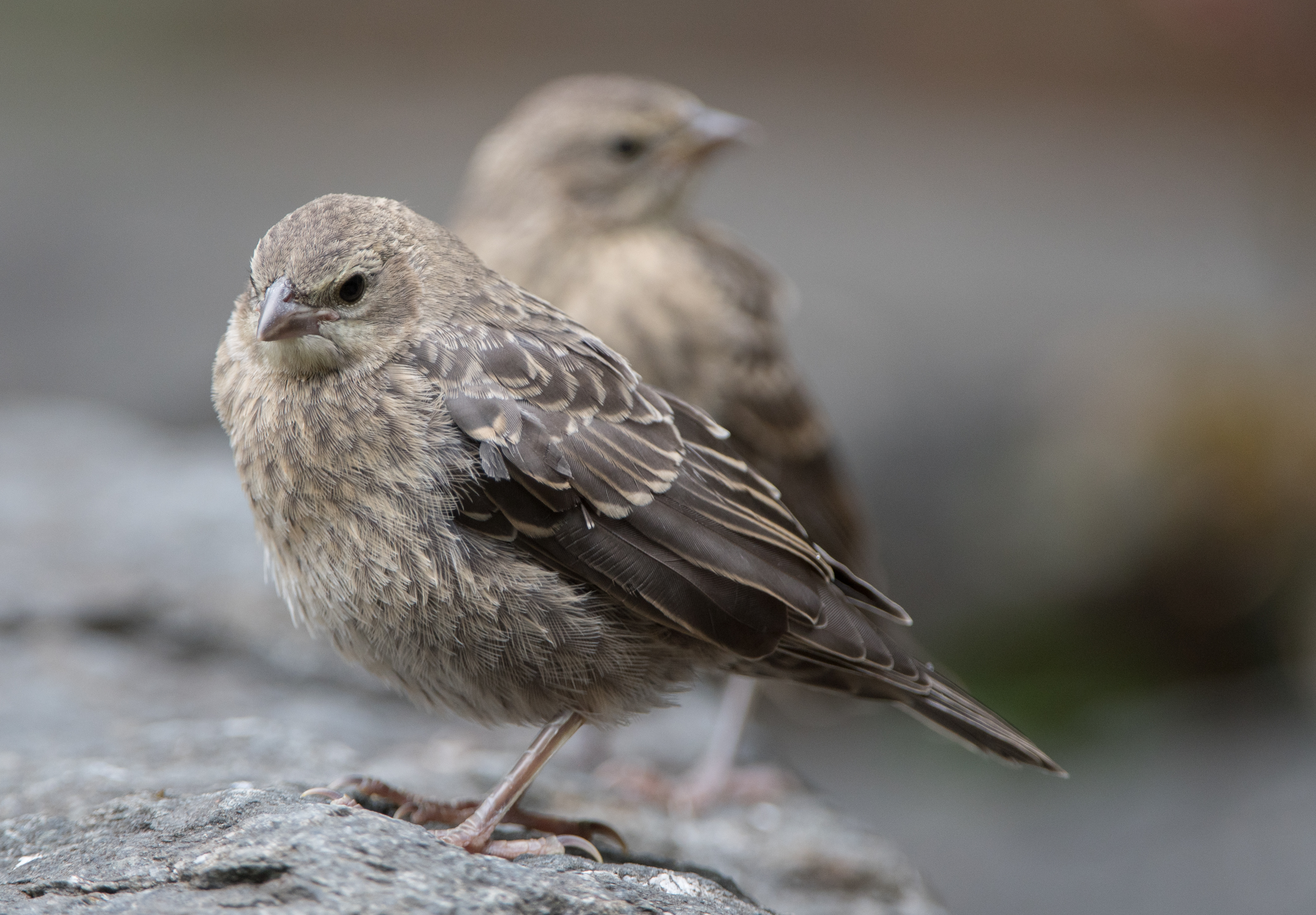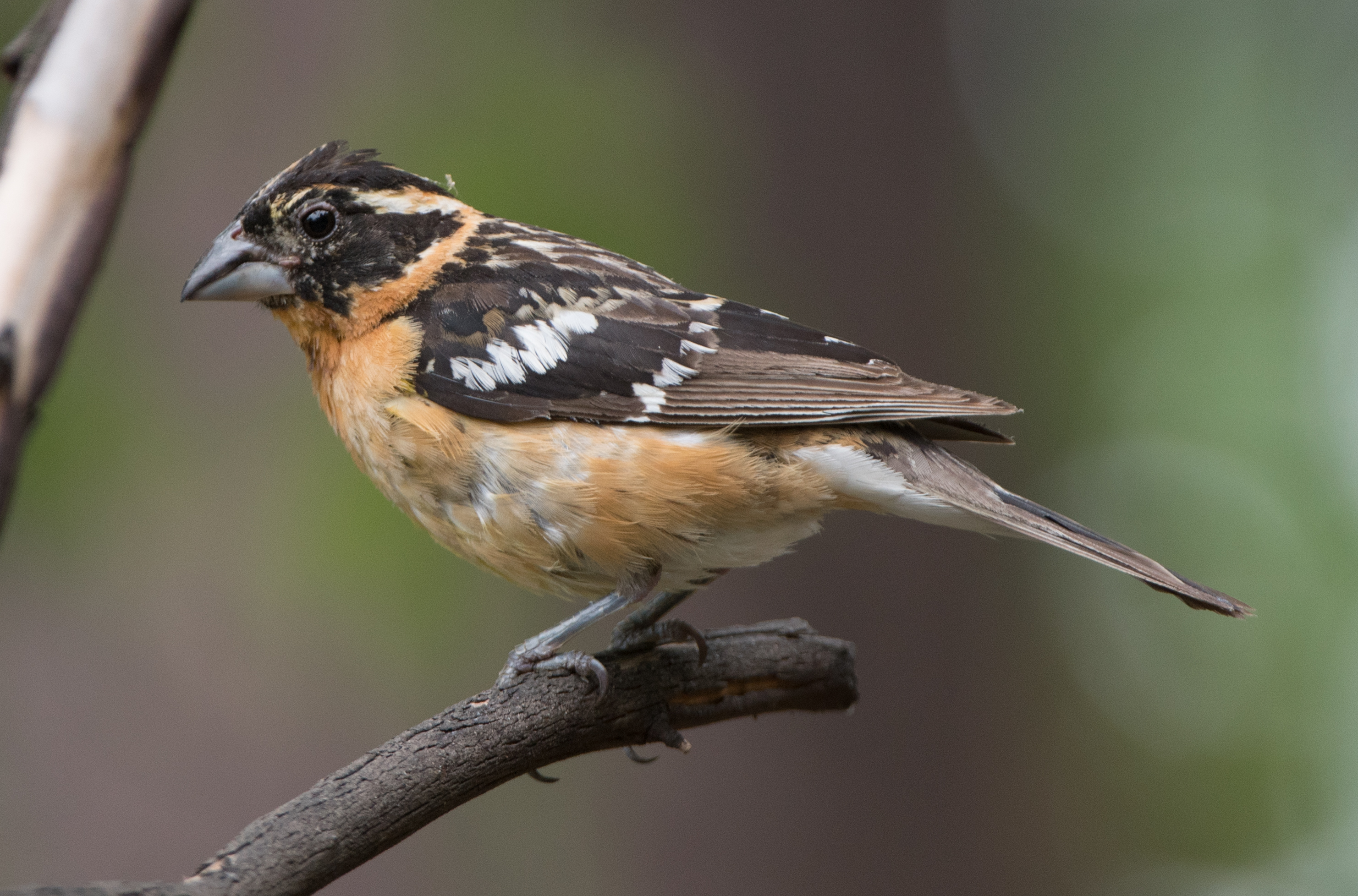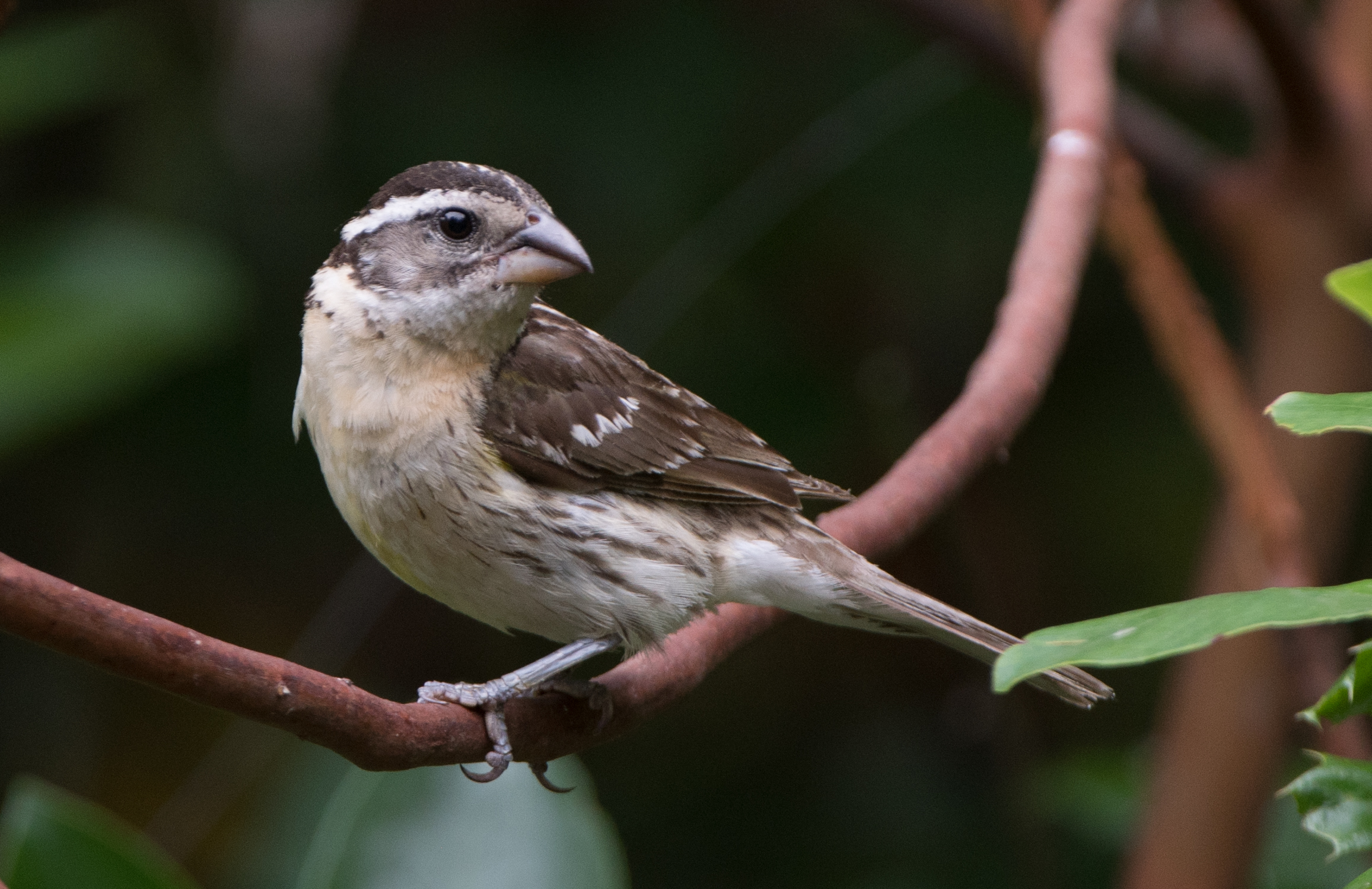In my recent three posts, I have tried to present some of the birds, and a very few of the photos, I took while in Central Texas in early May, 2019. During the time i was processing those photos, and organizing posts, I continued taking photos in my own yard. It was not unusual for me to take over 200 photos in a single day. I should be more selective!
I’ve been VERY disappointed in the number of some of the usual spring visitors (warblers, tanagers, waxwings, crossbills) we’ve had this year. But I’ve had two unusual visitors to the yard recently.
The first was a small flycatcher of the genus empidonax. It appeared in a Japanese maple located almost immediately next to me (on 6/23/2019), where I recognized it as a flycatcher. It flew around the yard for about ten minutes, its chief activity seeming to be chasing American goldfinches and chickadees, not around the yard, but OUT of the yard! I managed to get several photos but unfortunately, the flycatchers of this genus can be reliably identified only by their vocalizations. It wouldn’t heve mattered if it had vocalized… I wouldn’t have been unable to have identified it anyway.
My second unusual visitor (on 7/6/2019) was a Hutton’s vireo, a bird that is known for closely resembling a Ruby-crowned kinglet. The kinglets are mainly winter visitors so I was aware of the possibility of the bird being a vireo, but it wasn’t until I processed the photos that I could confirm the vireo identification. I managed to take quite a few photos, but I only got one fairly good one that I could use for identification.
On July 9, 2019, I looked out of the house to see two juvenile Brown-headed cowbirds around the watercourse. They seemed to bee wanting to identify with a male American robin in the watercourse, but the robin seemed unwilling to be associated with the cowbirds.
Back on a another more positive note, we have at least one family of Black-headed grosbeaks visiting the yard. This first photo is of a male. The lack of color on the second bird probably indicates that it is a juvenile.
This final photo is of a fawn, one of several in the neighborhood that, if not already so engaged, will grow to menace the plants in our yard. 